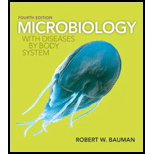
Microbiology with Diseases by Body System (4th Edition)
4th Edition
ISBN: 9780321918550
Author: Robert W. Bauman Ph.D.
Publisher: PEARSON
expand_more
expand_more
format_list_bulleted
Question
Chapter 18, Problem 2SA
Summary Introduction
To answer:
Why the hemolytic disease is not susceptible to a newborn with Rh- born to a Rh+ve mother.
Introduction:
Each person has different blood types when compared with others. Blood grouping is based on the ABO test and Rh test. People carry any one type of antigen in their red blood cells. The people with A antigens are grouped under A and people with B antigens are placed under B. The person with no antigen is placed under O group. Rh antigens are present in the red blood cells of the human. About 85% of humans have Rh+ve and 15% have Rh–ve antigens.
Expert Solution & Answer
Want to see the full answer?
Check out a sample textbook solution
Students have asked these similar questions
Why might erythroblastosis fetalis occur when an
Rh- mother becomes pregnant with a second Rh+
baby (after exposure to the previous Rh+ baby's
blood)?
A) Erythroblastosis fetalis can only occur
when an Rh+ mother becomes pregnant
with an Rh- baby.
B) After primary exposure, if the Rh- mother
has an Rh+ baby, then antibodies the
mom produces can cross the placenta and
attack the baby's blood.
C) The Rh- mother always produces
antibodies to the Rh+ blood, so
erythroblastosis fetalis is a condition that
can happen to any Rh+ baby (first or
subsequent).
What will happen if an Rh-negative person receives a transfusion of Rh-positive blood?
If a patient will receive a blood transfusion that is not matched to the patient’s blood type, what will happen? Explain briefly.
1) six hundred blood donors donate at a particular clinic over a 5-day period. the distribution of blood types and Rh factors as followed
AB-positive- 24
AB-negative- 6
2) what is the probability that a randomly selected blood donor from this group .....
C) Has type O blood and is Rh-negative
d) has type O blood or is Rh-negative
e) has type O blood, given that they are Rh-negative
f) is Rh-negative, given that they have type o blood
g) are having type o blood and being Rh-negative independent? Explain.
h) are having type A blood and being Rh-negative independent? explain.
Chapter 18 Solutions
Microbiology with Diseases by Body System (4th Edition)
Ch. 18 - Prob. 1CCSCh. 18 - Prob. 1TMWCh. 18 - Prob. 2TMWCh. 18 - A Case of AIDS A 25-year-old man is admitted to...Ch. 18 - Prob. 3TMWCh. 18 - The immunoglobulin class that mediates type I...Ch. 18 - The major inflammatory mediator released by...Ch. 18 - Hemolytic disease of the new born is caused by...Ch. 18 - Farmers lung is a hypersensitivity pneumonitis...Ch. 18 - A positive tuberculin skin test indicates that a...
Ch. 18 - Which of the following is an autoimmune disease?...Ch. 18 - When a surgeon conducts a cardiac bypass operation...Ch. 18 - A deficiency of both B cells and T cells is most...Ch. 18 - Prob. 9MCCh. 18 - What do medical personnel administer to counteract...Ch. 18 - Which of the following is not typically part of an...Ch. 18 - Prob. 12MCCh. 18 - Prob. 13MCCh. 18 - Prob. 14MCCh. 18 - Prob. 15MCCh. 18 - Prob. 1MTFCh. 18 - Prob. 2MTFCh. 18 - Prob. 3MTFCh. 18 - Prob. 4MTFCh. 18 - Modified True/False 5. ___ Graft-versus-host...Ch. 18 - Prob. 1MCh. 18 - Prob. 1SACh. 18 - Prob. 2SACh. 18 - Prob. 3SACh. 18 - Contrast autografts, isografts, allografts, and...Ch. 18 - Prob. 5SACh. 18 - Prob. 1VICh. 18 - Prob. 2VICh. 18 - Prob. 3VICh. 18 - Prob. 1CTCh. 18 - Why cant physicians use skin tests similar to the...Ch. 18 - Prob. 3CTCh. 18 - Prob. 4CTCh. 18 - What types of illnesses cause death in patients...Ch. 18 - Prob. 6CTCh. 18 - Why do the blisters of positive tuberculin...Ch. 18 - Retroviruses such as HIV use RNA as a primer for...Ch. 18 - Prob. 9CTCh. 18 - Reverse transcriptase is notoriously sloppy in...Ch. 18 - A patient arrives at the doctors office with a...Ch. 18 - Prob. 12CTCh. 18 - Prob. 13CTCh. 18 - Prob. 1CM
Knowledge Booster
Similar questions
- What Rh antigen is present in the red blood cells of this type of blood?arrow_forwardDescribe the Rh blood group and its connection tohemolytic disease of the newborn (HDN).arrow_forwardDescribe Hemolytic Disease of the Newborn (HDN). Who is at risk for this disease? How can it be prevented?arrow_forward
- LIST OF THE BLOOD TYPES FROM WHICH THE FOLLOWING PEOPLE COULD RECEIVE, ASSUMING THE RECIPIENTS HAVE BEEN EXPOSED TO Rh antigens: Recipient:type O+ Recipient: Type B+ Recipient: type A- Recipient: type AB-arrow_forwardBriefly discuss the relationship between leukaemia and lymphoma.arrow_forwardThe Klein and Mancinelli (2021) textbook describes a Level IX and a Level X on the RLA. How would a clinician working in an outpatient facility find those extra levels useful when treating their clients with TBI?arrow_forward
- Define the following terms: Antigen, Antibody and Rh factorarrow_forwardWhich of the following ALL (Acute Lymphocytic Leukemia) FAB Type occurs most frequently in the pediatric age group? Question 1 options: A) L1 B) L2 C) L3 D) L4arrow_forwardA woman who is Rh- mates with a man who is Rh+. Since the Rh+ is dominant, what would the fetus's Rh factor type be?A person who is Rh- can donate blood to other people who are either Rh+ or Rh-. However, an Rh+ person can only give blood to who? Please explain.arrow_forward
arrow_back_ios
SEE MORE QUESTIONS
arrow_forward_ios
Recommended textbooks for you
 Human Heredity: Principles and Issues (MindTap Co...BiologyISBN:9781305251052Author:Michael CummingsPublisher:Cengage Learning
Human Heredity: Principles and Issues (MindTap Co...BiologyISBN:9781305251052Author:Michael CummingsPublisher:Cengage Learning

Human Heredity: Principles and Issues (MindTap Co...
Biology
ISBN:9781305251052
Author:Michael Cummings
Publisher:Cengage Learning
